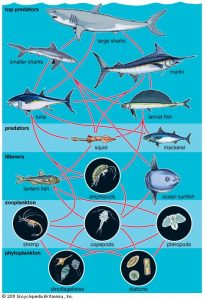It’s hard to believe that an estimated 8.75 million metric tons (MT) of mismanaged plastic waste entered the ocean within the span of only one year; 2010. In a new study (click for link), published early Feb 2015, scientists calculated that 275 million metric tons (MT) of plastic waste was generated in 192 coastal countries in 2010, with 4.8 to 12.7 million of that 275 million MT entering the ocean (8.75 million MT being the average of that range). This 8.75 Million MTs of plastic waste stems from the staggering 31.9 million MT of mismanaged plastic waste that was produced in coastal countries in 2010. Mismanaged, if you’re wondering (and you should be!) means littered or inadequately disposed of. 😡
But wait, just WHEN did plastics start becoming “increasingly dominant in the consumer market place”? Fire up the time machine everyone, and rewind way back to the 1930s and 40s, when plastics were first becoming commercially developed. As a result, plastic production spiked, as well as the amount of plastic waste accounted for. In fact, “Global plastic resin production reached 288 million MT in 2012, a 620% increase since 1975. The largest market sector for plastic resins is packaging; that is, materials designed for immediate disposal. In 1960, plastics made up less than 1% of municipal solid waste by mass in the United States; by 2000, this proportion increased by an order of magnitude. By 2005, plastic made up at least 10% of solid waste by mass in 58% (61 out of 105) of countries with available data.”
Why is this plastic waste accumulation bad for Marine Life? I’m sure the average reader could come up with a few good reasons on their own! However, one of the most significant reasons is that “weathering of plastic debris causes fragmentation into particles that even small marine invertebrates may ingest… Its small size also renders this debris untraceable to its source and extremely difficult to remove from open ocean environments.” This distribution of plastic debris is a sure-fire way for all ocean wildlife to be affected; ingesting stubbornly processed, petroleum-based materials directly causes the death of sea turtles, fish, and other marine life, and their death has an astronomical amount of indirect effects on the larger food web that each creature is a part of. By allowing mismanaged plastic waste to enter the oceans, we are directly interfering with a multitude of ecosystems, (of which humans are a part of as well)!
“weathering of plastic debris causes fragmentation into particles that even small marine invertebrates may ingest… Its small size also renders this debris untraceable to its source and extremely difficult to remove from open ocean environments.” This distribution of plastic debris is a sure-fire way for all ocean wildlife to be affected; ingesting stubbornly processed, petroleum-based materials directly causes the death of sea turtles, fish, and other marine life, and their death has an astronomical amount of indirect effects on the larger food web that each creature is a part of. By allowing mismanaged plastic waste to enter the oceans, we are directly interfering with a multitude of ecosystems, (of which humans are a part of as well)!
Interconnectivity of the ecosystem; harm one, you harm many.
How do you, the reader, help? For one, reduce the amount of plastics you use! Instead of buying plastic containers, buy compostable containers (see our post here!) that are biodegradable and a renewable plant-based resource that won’t contribute to landfill waste. Plus,you can eliminate single use plastic bags by buying your own unique & reusable book/grocery bag to shuttle things around. Additionally, the authors of the paper advise that the best way to mitigate this plastic waste problem is to direct attention towards longterm strategies; Long-term solutions will likely include waste reduction and “downstream” waste management strategies such as expanded recovery systems and extended producer responsibility. Improving waste management infrastructure in developing countries is paramount and will require substantial resources and time. While such infrastructure is being developed, industrialized countries can take immediate action by reducing waste and curbing the growth of single-use plastics.
